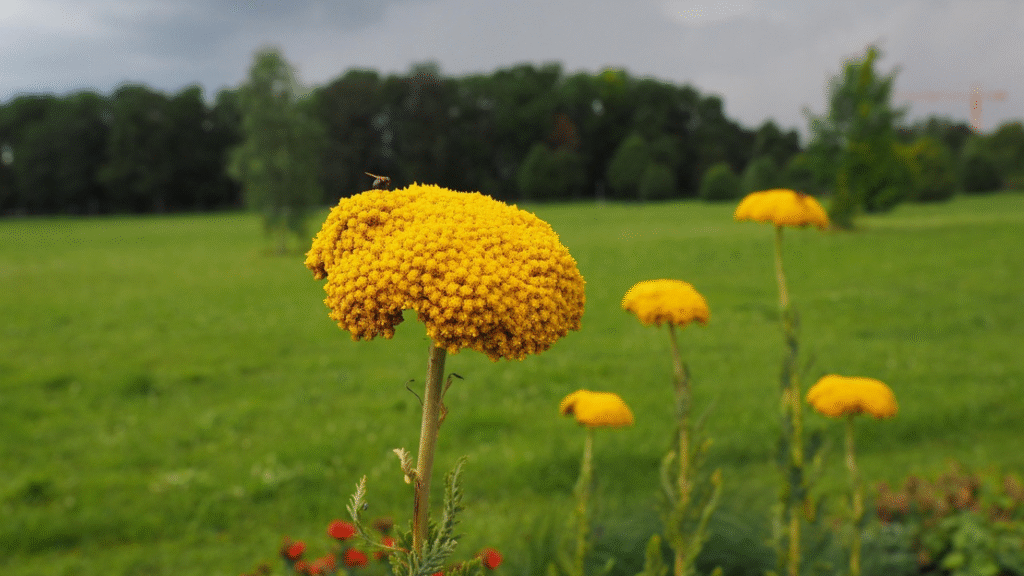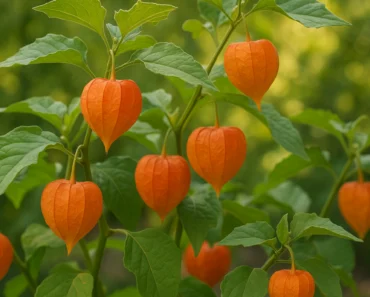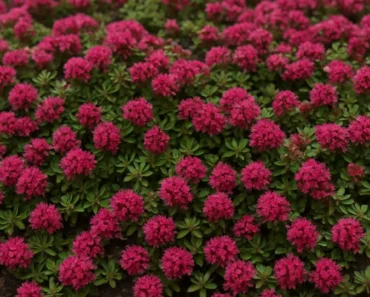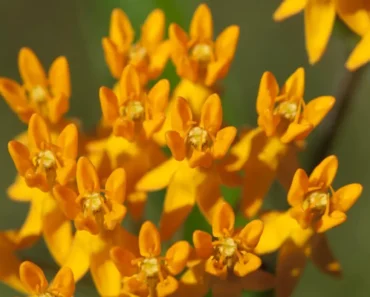
Yarrow (Achillea), with its feathery foliage and iconic flat-topped flower clusters, is a resilient and beautiful perennial that graces gardens worldwide. But choosing the best place to plant yarrow is crucial for vibrant blooms, healthy growth, and manageable spread. This definitive guide will walk you through every factor to consider for optimal yarrow siting, ensuring your achillea millefolium thrives for years to come.
Table of Contents
The Best Place to Plant Yarrow: Key Conditions at a Glance
Before diving deep into the specifics, here’s your quick reference checklist for where is the best place to plant yarrow:
| Condition | Requirement | Why It Matters |
|---|---|---|
| Sunlight | Full Sun (6+ hours direct sun per day) | Essential for flowering and stem strength |
| Soil Type | Well-draining soil | Prevents root rot and disease |
| Soil pH | Neutral to slightly alkaline (6.0-7.5) | Optimal nutrient uptake |
| Air Circulation | Good airflow around plants | Prevents fungal diseases |
| Space | 18-24 inches between plants | Allows for natural spread |
| Avoid | Deep shade, waterlogged areas, overly rich soil | Prevents common growth problems |
Expert Tip: The golden rule for yarrow placement is “sun plus drainage equals success.” These two factors trump all others when determining where to plant your common yarrow.
Decoding Yarrow’s Needs: Why Site Selection is Critical for Achillea
Understanding why yarrow has specific requirements helps you make better planting decisions and troubleshoot issues before they arise.
Sunlight: Fueling Flowers and Preventing Flop
Full sun exposure is paramount when determining where is the best place to plant yarrow. Here’s what happens under different light conditions:
- 6+ hours of direct sun: Produces abundant flowers, strong stems, and compact growth
- 4-6 hours of sun: Acceptable but with reduced flowering (about 30% fewer blooms)
- Less than 4 hours: Results in leggy, weak growth and minimal flowering
Common yarrow evolved in open meadows and prairies where it received unfiltered sunlight throughout the day. In insufficient light, the plant stretches toward available light sources, creating weak, floppy stems that can’t support the flower heads properly.
Visual indicators of insufficient light:
- Stems longer than typical for the variety
- Pale green foliage instead of vibrant color
- Fewer flower clusters
- Plants leaning toward light sources
Drainage, Drainage, Drainage: The Golden Rule for Yarrow Roots
When considering where is the best place to plant yarrow, soil drainage takes precedence over soil fertility. Achillea millefolium originates from well-drained prairie soils and Mediterranean climates where water moves quickly through the soil profile.
Why proper drainage matters:
- Yarrow roots are susceptible to fungal rot in consistently moist conditions
- Waterlogged soil prevents oxygen from reaching the root system
- Poor drainage leads to crown rot, the #1 killer of established yarrow plants
Quick drainage test: Dig a hole 12 inches deep and 6 inches wide. Fill with water and time how long it takes to drain. Ideal drainage: water disappears within 2-4 hours.
Soil Fertility: Why “Lean” is Often Better for Yarrow
Contrary to many garden plants, yarrow actually performs better in moderately fertile to poor soils. Overly rich soil creates several problems:
- Weak, floppy growth: High nitrogen levels promote excessive foliage at the expense of strong stems
- Reduced flower color intensity: Plants focus energy on leaf production rather than vibrant blooms
- Increased disease susceptibility: Lush growth in rich soil creates conditions favorable to fungal problems
The best place to plant yarrow is in soil that would be considered “average” to “poor” by typical garden standards.
Air Circulation: Keeping Foliage Healthy
Good airflow around your yarrow plants prevents moisture from lingering on leaves, reducing the risk of:
- Powdery mildew
- Leaf spot diseases
- Crown rot
Avoid planting yarrow in enclosed spaces, against solid walls without airflow, or in dense plantings where air cannot circulate freely.
Your Garden Audit: Identifying Prime Yarrow Real Estate
Now let’s translate yarrow’s needs into actionable steps for evaluating potential planting locations in your specific garden.
Mapping Your Sun: Observing Light Patterns Throughout the Day
Create a sun map of your garden:
- Early morning check (8-9 AM): Note which areas receive direct sunlight
- Midday observation (11 AM-1 PM): Identify spots with full overhead sun
- Afternoon assessment (3-4 PM): Mark areas still receiving direct light
- Evening review (6-7 PM): Note any areas with extended sun exposure
Mark potential yarrow locations that receive 6+ hours of direct sunlight during peak growing season. Remember that deciduous trees will affect these patterns as they leaf out in spring.
The “Perk Test”: A Simple Way to Check Soil Drainage
Beyond the basic drainage test mentioned earlier, here’s a more comprehensive assessment:
Advanced percolation test:
- Dig test holes 18 inches deep in potential planting areas
- Fill holes with water and let drain completely
- Refill immediately and time the drainage
- Ideal results: Water level drops 1-2 inches per hour
- Acceptable: Water drains completely within 24 hours
- Poor drainage: Water remains after 24 hours (choose a different location)
Considering Microclimates within Your Garden
Identify special conditions in your landscape:
- Hot spots: Areas near south-facing walls, driveways, or reflective surfaces (excellent for yarrow)
- Dry zones: Spots under roof overhangs or large trees (suitable if they receive adequate sun)
- Windy areas: Locations with consistent air movement (beneficial for disease prevention)
- Frost pockets: Low-lying areas where cold air settles (avoid for tender yarrow varieties)
Planning for Spread: Giving Yarrow Room (Or Containing It)
Understanding yarrow’s growth habits:
| Yarrow Type | Spread Pattern | Spacing Needs | Containment Options |
|---|---|---|---|
| Common Yarrow | Aggressive spreader via underground rhizomes | 24-36 inches apart | Root barriers, regular division |
| Hybrid Cultivars | Moderate spreading to clumping | 18-24 inches apart | Less containment needed |
| Compact Varieties | Tight clumps | 12-18 inches apart | No containment necessary |
Where to embrace yarrow’s spread:
- Naturalized areas
- Slope stabilization projects
- Large perennial borders
- Meadow gardens
Where to contain yarrow:
- Formal garden beds
- Near delicate plants
- Small garden spaces
- Mixed container plantings
Tailoring Yarrow Placement: Considerations for Specific Varieties & Climates

The best place to plant yarrow can vary slightly depending on your specific variety and local growing conditions.
Common Yarrow (Achillea millefolium) vs. Cultivars
Species characteristics:
- Common Yarrow: Most adaptable, aggressive spreader, extremely drought tolerant
- ‘Moonshine’: Prefers very lean soil, exceptional drought tolerance, neat clumping habit
- ‘Paprika’: More compact, suitable for smaller spaces, tolerates slightly richer soil
- ‘Terracotta’: Heat tolerant, good for southern gardens, maintains color better in partial shade
Fern-leaf Yarrow (Achillea filipendulina):
- Taller growth (3-4 feet)
- Needs protection from strong winds
- Requires more space between plants
- Best in back of borders or as specimen plants
Planting Yarrow in Hot, Humid Climates
Special considerations for challenging climates:
- Afternoon shade: In zones 8-10, provide 2-3 hours of afternoon shade during peak summer
- Enhanced air circulation: Critical in humid conditions to prevent fungal diseases
- Elevated planting: Consider raised beds or mounded planting areas for improved drainage
- Heat-tolerant varieties: Choose cultivars specifically bred for hot climate performance
Recommended varieties for hot climates:
- ‘Terracotta’
- ‘Desert Eve’ series
- ‘Sassy Summer’ series
Planting Yarrow in Very Dry/Xeric Conditions
Yarrow excels in xerogarden settings once established. Ideal xeric placement:
- South-facing slopes: Maximum sun exposure and natural drainage
- Rock gardens: Excellent drainage and reflected heat
- Gravel gardens: Perfect drainage and mineral-rich growing medium
- Native plant landscapes: Pairs beautifully with other drought-tolerant natives
Planting Yarrow in Coastal Areas
Coastal advantages:
- Natural air circulation from ocean breezes
- Generally good drainage in sandy soils
- Salt tolerance (moderate levels)
Coastal considerations:
- Wind protection: Provide windbreaks for tall varieties
- Salt spray tolerance: Common yarrow handles light salt spray well
- Soil amendments: Sandy coastal soils may benefit from minimal organic matter addition
Yarrow’s Neighbors: Best Companion Plants & Planting Combinations
Creating successful plant partnerships enhances yarrow’s performance and creates stunning garden displays.
Ideal Companion Plants
Plants with similar cultural requirements:
| Companion Plant | Shared Benefits | Design Synergy |
|---|---|---|
| Lavender | Same sun/drainage needs | Complementary textures and colors |
| Salvia | Drought tolerance | Extended bloom season |
| Echinacea | Attracts beneficial insects | Height variation and flower forms |
| Ornamental Grasses | Low maintenance | Movement and seasonal interest |
| Sedum | Water-wise gardening | Ground-level interest |
| Russian Sage | Heat and drought tolerance | Silvery foliage contrast |
Plants to Avoid Near Yarrow
Incompatible companions:
- Hostas: Require shade and consistent moisture
- Astilbe: Need rich, moist soil conditions
- Impatiens: Shade-loving annuals with high water needs
- Ferns: Prefer moist, shaded conditions
Creating Beneficial Insect Habitat
Yarrow attracts numerous beneficial insects including:
- Ladybugs
- Lacewings
- Parasitic wasps
- Beneficial flies
- Native bees
Plant yarrow near:
- Vegetable gardens (natural pest control)
- Other pollinator plants for extended nectar sources
- Areas where you want to encourage beneficial insects
Planting Pitfalls: Where NOT to Plant Your Yarrow
Learning from common mistakes helps ensure your yarrow thrives from the start.
Locations to Avoid
Deep shade areas:
- Under dense tree canopies
- North sides of buildings without reflected light
- Enclosed courtyards with limited sky exposure
Poorly drained locations:
- Low-lying areas where water collects
- Heavy clay soil without amendments
- Areas near downspouts or irrigation runoff
- Boggy or consistently moist spots
Overly crowded spaces:
- Densely planted perennial borders without adequate spacing
- Areas with poor air circulation
- Competition from aggressive, shallow-rooted plants
Highly fertile locations:
- Recently composted beds
- Areas regularly fertilized for annual flowers
- Spots amended with fresh manure
- Over-irrigated landscape zones
Common Placement Mistakes
Mistake #1: Planting yarrow in the same conditions as roses or other heavy feeders Solution: Create separate garden zones based on cultural requirements
Mistake #2: Underestimating spread and planting too close to delicate perennials Solution: Research mature size and plan accordingly
Mistake #3: Choosing locations based on aesthetics alone without considering growing conditions Solution: Prioritize plant health requirements over visual preferences
Your Top Yarrow Planting Location Questions Answered
Can yarrow grow in partial shade?
While yarrow can tolerate very light partial shade (4-6 hours of direct sun), flowering will be significantly reduced. For best results, choose the sunniest location available in your garden.
Does yarrow need full sun all day?
Yarrow performs best with 6+ hours of direct sunlight, but it doesn’t need to be continuous. Morning sun plus afternoon sun with midday filtered light can work, though all-day sun is ideal.
What kind of soil is best for yarrow?
Well-draining soil trumps soil fertility. Yarrow thrives in average to poor soils as long as drainage is excellent. Sandy loam, gravelly soil, or amended clay all work well.
Will yarrow grow in clay soil?
Yes, but only if drainage is improved. Amend clay soil with coarse sand, perlite, or gravel. Consider raised beds or mounded plantings in heavy clay areas.
How much space does yarrow need?
Spacing depends on the variety:
- Common yarrow: 24-36 inches apart
- Hybrid cultivars: 18-24 inches apart
- Compact varieties: 12-18 inches apart
Is yarrow good for slopes?
Absolutely! Yarrow’s extensive root system makes it excellent for erosion control on slopes. The combination of drought tolerance and soil-binding roots creates ideal slope stabilization.
Can I plant yarrow in containers?
Yes, yarrow works well in containers with these considerations:
- Use well-draining potting mix
- Choose containers at least 12 inches deep
- Select compact varieties for smaller pots
- Provide full sun exposure
- Allow for winter protection in cold climates
The Perfect Place for Yarrow: Your Key to a Thriving Plant
Success with yarrow comes down to understanding and providing its basic requirements: full sun and well-drained soil. When you combine these essentials with proper spacing and good air circulation, you create conditions where achillea millefolium can thrive for decades.
Key takeaways for yarrow placement:
- Prioritize sun exposure – 6+ hours of direct sunlight daily
- Ensure excellent drainage – this trumps soil fertility every time
- Allow adequate spacing – plan for mature spread of your chosen variety
- Consider your climate – adapt general guidelines to local conditions
- Choose compatible companions – surround yarrow with plants having similar needs
Remember: The best place to plant yarrow in your garden is where the plant’s needs align with your site’s natural conditions. Work with your landscape rather than against it, and your yarrow will reward you with years of beautiful, low-maintenance performance.
Whether you’re creating a drought-tolerant landscape, establishing a pollinator garden, or simply looking for a reliable perennial that delivers consistent beauty, proper site selection sets the foundation for success.
Where have you found yarrow thrives best in your garden? Share your tips or siting questions in the comments below! Your experiences help fellow gardeners create thriving yarrow displays.
Author
George Wine is a seasoned gardening expert with over 20 years of experience in the field of horticulture. His passion for plants and nature has driven his career, where he has honed his skills in various aspects of gardening, from landscape design to plant care. George holds a Master of Science in Horticulture from the University of California, Davis (UC Davis), a prestigious institution known for its research and advancements in plant science.
Throughout his career, George has worked with a diverse range of clients, offering tailored solutions to enhance outdoor spaces and create thriving gardens. His knowledge and expertise allow him to provide invaluable advice, ensuring that both novice and experienced gardeners achieve their gardening goals. Whether you’re looking for tips on sustainable gardening practices, innovative design ideas, or advice on specific plant species, George is here to help you cultivate the garden of your dreams.






